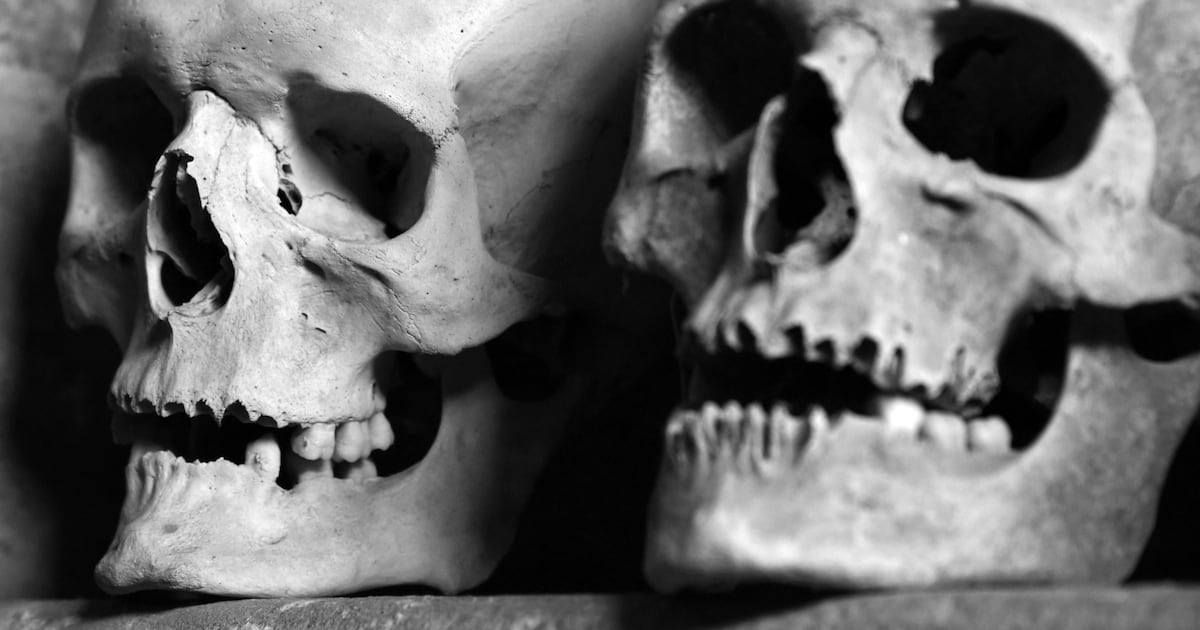Science
Scientists Discover Hormones in Ancient Skeletons, Paving Path for Pregnancy Research

Researchers have developed a method to test ancient human remains for hormones associated with pregnancy, significantly advancing the field of archaeology. This breakthrough enables scientists to ascertain whether a woman was pregnant or had recently given birth at the time of her death. The study, published on October 2, 2023, in the Journal of Archaeological Science, reveals that key reproductive hormones—estrogen, progesterone, and testosterone—were detected in the hard tissues of skeletons dating back as far as 1,000 years.
Lead author Aimée Barlow, an archaeologist at the University of Sheffield in northern England, described the findings as a significant milestone. “We found a ‘hormone archive’ in skeletons and teeth,” Barlow stated in an interview. “This is a first. Nobody has ever detected these specific hormones in teeth or dental calculus before.” Notably, this marks the first successful measurement of progesterone in human bone tissue.
Detecting pregnancy in ancient remains has historically posed challenges. Scientists previously believed that the inorganic nature of hard tissues would prevent the preservation of such proteins. Barlow and her team, however, applied the enzyme-linked immunosorbent assay (ELISA) technique to samples from seven female and three male skeletons, which spanned from the first to the 19th centuries. ELISA is a well-established method for detecting and quantifying protein molecules, including progesterone, a critical biomarker for pregnancy.
The results indicated measurable levels of estrogen, progesterone, and testosterone in various skeletal and dental structures. The study concluded that high levels of progesterone in dental structures and calculus, along with the presence of estrogen in bone and a lack of testosterone in hard tissues, were consistent with pregnancy at the time of death.
Barlow emphasized that confirming the preservation of hormones in skeletal remains could eventually allow researchers to glean insights into reproductive histories. “This will be especially useful for historical periods where no written records exist,” she said. With further study, researchers may determine the age at which a woman first became pregnant, whether she experienced pregnancy loss, and the intervals between births if she had multiple children.
Future Research Directions
Despite the promising results, Barlow acknowledged the need for further development of the technique. Establishing baseline hormone levels in skeletal tissues requires more extensive studies, including samples from living individuals with detailed medical histories. “We need to understand the fundamental science,” she noted, advocating for research on how these hormones are incorporated into and stored within different tissues. Additionally, exploring the preservation and degradation of these hormones over time in various burial environments is crucial.
The study has garnered attention from experts in the field. Nikolas Lemos, a professor of forensic medical sciences at Queen Mary University of London, described it as “a pioneering study… which has achieved a world-first.” He cautioned, however, that the small sample size—only two of the ten individuals were pregnant at death—means the findings should be viewed as proof of concept rather than a routine diagnostic tool.
Another expert, Alexander Comninos, a professor of endocrinology at Imperial College London, highlighted the research’s potential implications. “By understanding reproductive profiles of the past, this can provide insights into how these may have changed over time and perhaps glimpses of the future,” he stated. The ability to identify key hormones in bone could also stimulate further contemporary research in related fields.
The groundbreaking findings open new avenues for understanding the hormonal dimensions of life and death in ancient populations. As researchers continue to refine their methods, the implications for archaeology and historical understanding could be profound.
-

 Education3 months ago
Education3 months agoBrandon University’s Failed $5 Million Project Sparks Oversight Review
-

 Science4 months ago
Science4 months agoMicrosoft Confirms U.S. Law Overrules Canadian Data Sovereignty
-

 Lifestyle3 months ago
Lifestyle3 months agoWinnipeg Celebrates Culinary Creativity During Le Burger Week 2025
-

 Health4 months ago
Health4 months agoMontreal’s Groupe Marcelle Leads Canadian Cosmetic Industry Growth
-

 Technology3 months ago
Technology3 months agoDragon Ball: Sparking! Zero Launching on Switch and Switch 2 This November
-

 Science4 months ago
Science4 months agoTech Innovator Amandipp Singh Transforms Hiring for Disabled
-

 Education3 months ago
Education3 months agoRed River College Launches New Programs to Address Industry Needs
-

 Technology4 months ago
Technology4 months agoGoogle Pixel 10 Pro Fold Specs Unveiled Ahead of Launch
-

 Business3 months ago
Business3 months agoRocket Lab Reports Strong Q2 2025 Revenue Growth and Future Plans
-

 Technology2 months ago
Technology2 months agoDiscord Faces Serious Security Breach Affecting Millions
-

 Education3 months ago
Education3 months agoAlberta Teachers’ Strike: Potential Impacts on Students and Families
-

 Science3 months ago
Science3 months agoChina’s Wukong Spacesuit Sets New Standard for AI in Space
-

 Education3 months ago
Education3 months agoNew SĆIȺNEW̱ SṮEȽIṮḴEȽ Elementary Opens in Langford for 2025/2026 Year
-

 Technology4 months ago
Technology4 months agoWorld of Warcraft Players Buzz Over 19-Quest Bee Challenge
-

 Business4 months ago
Business4 months agoNew Estimates Reveal ChatGPT-5 Energy Use Could Soar
-

 Business3 months ago
Business3 months agoDawson City Residents Rally Around Buy Canadian Movement
-

 Technology2 months ago
Technology2 months agoHuawei MatePad 12X Redefines Tablet Experience for Professionals
-

 Business3 months ago
Business3 months agoBNA Brewing to Open New Bowling Alley in Downtown Penticton
-

 Technology4 months ago
Technology4 months agoFuture Entertainment Launches DDoD with Gameplay Trailer Showcase
-

 Technology4 months ago
Technology4 months agoGlobal Launch of Ragnarok M: Classic Set for September 3, 2025
-

 Technology4 months ago
Technology4 months agoInnovative 140W GaN Travel Adapter Combines Power and Convenience
-

 Science4 months ago
Science4 months agoXi Labs Innovates with New AI Operating System Set for 2025 Launch
-

 Top Stories2 months ago
Top Stories2 months agoBlue Jays Shift José Berríos to Bullpen Ahead of Playoffs
-

 Technology4 months ago
Technology4 months agoNew IDR01 Smart Ring Offers Advanced Sports Tracking for $169










